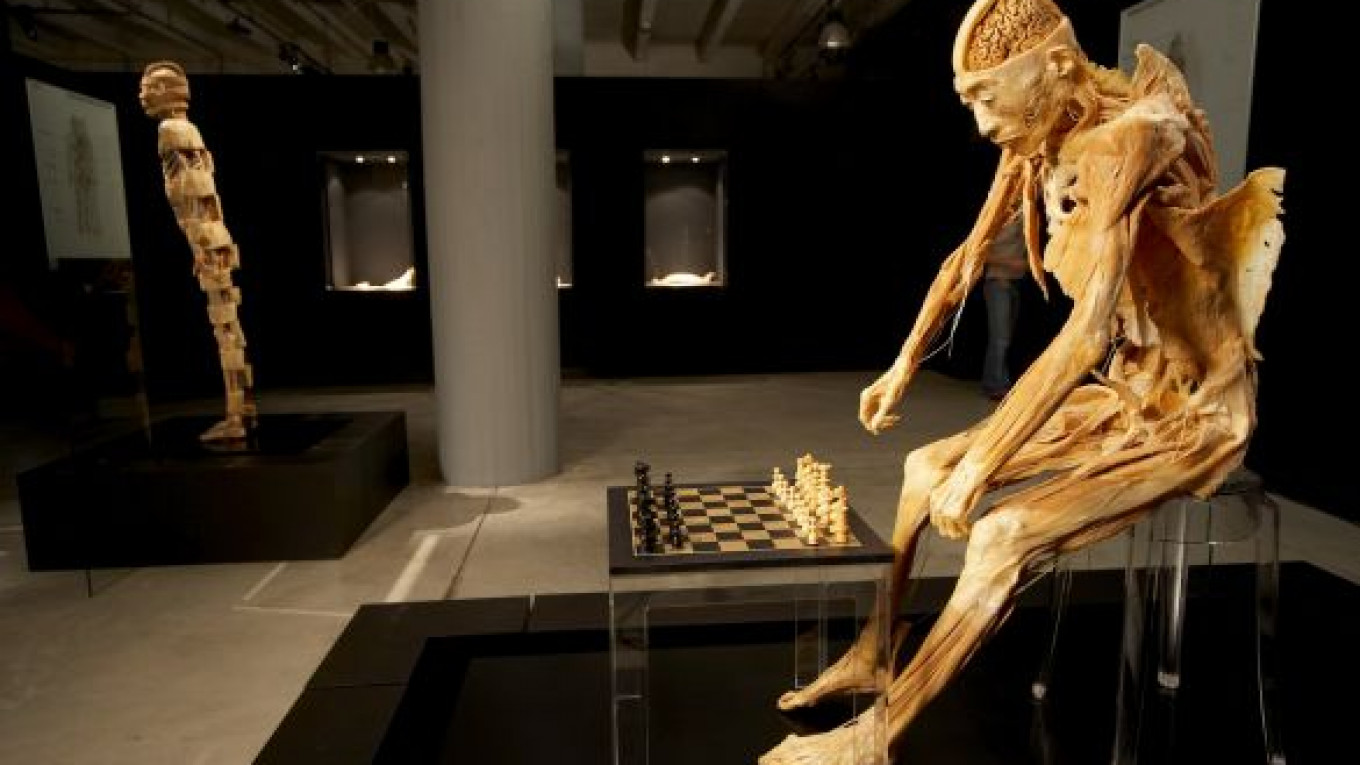Lenin's corpse has been able to rest comfortably in a unique way at his mausoleum for more 90 years , but now, he has some equally well-preserved visitors in the Red Square Area.
In the art center Vetoshny the exhibition "Our body. The Universe within" has opened.
"Our body" is the first anatomy show to cross Russia's borders and open its doors inside the country. On display are 20 real full-body specimens and some 200 body parts and organs.
"Globally, we are all living longer lives. The goal of our exhibition is that you understand how your body functions and to provide you with the ability to live much longer and healthier lives," exhibition director Heidi Pinchell said.
The exhibition was created in 2007 by educational center "The Universe Within Project" (United States), "Orlando Science Center" (United States) and the "Anatomical Sciences & Technologies Foundation" (Hong Kong). It has traveled across 30 cities worldwide and attracted more than 2 million visitors.
"In the past, human anatomy was illegal to study. It was artists like Michelangelo and DaVinci that allowed us to peek underneath the skin. This knowledge was then passed on to doctors, and only doctors had the privilege of seeing it," Pinchell said.
Through "Our Body," an international audience is exposed to its mysteries first-hand, and visitors can examine tendons, muscles and skeletons in detail.
The exhibition's figures can be viewed in a variety of poses, engaging in activities such as running, archery and chess.
All the specimens have been treated with a special polymer impregnation-technique. This modern technique does not save the skin and hairs like with Lenin's coating-technique, but it allows the viewer to see the inside of the body in a spectacular way.
"It is a molecule exchange. A water molecule is exchanged for a plastic molecule. Polymer-impregnation prevents mold from happening, and a specimen can be preserved forever if they so want to," Pinchell said.
The four step process known as plastination fixates the bodies and muscles in any chosen position and prevents decay from setting in.
Plastination removes the fat from the body and takes away almost every recognizable feature in the human body, leaving only the "machine" or mechanism visible. Even though this may create an eerie effect, the exhibition is not at all intended to shock or scare it's visitors, but merely to educate.
It also drains color from the body, so all specimens have been painted to show the organs the way a surgeon sees them while operating.
And as for Lenin? "We hope that he likes his new neighbors," Pinchell said.
The exhibition is opened until Aug. 27 at the art centre Vetoshny at 13 Vetoshny Pereulok.
Contact the author at [email protected]
Related articles:
A Message from The Moscow Times:
Dear readers,
We are facing unprecedented challenges. Russia's Prosecutor General's Office has designated The Moscow Times as an "undesirable" organization, criminalizing our work and putting our staff at risk of prosecution. This follows our earlier unjust labeling as a "foreign agent."
These actions are direct attempts to silence independent journalism in Russia. The authorities claim our work "discredits the decisions of the Russian leadership." We see things differently: we strive to provide accurate, unbiased reporting on Russia.
We, the journalists of The Moscow Times, refuse to be silenced. But to continue our work, we need your help.
Your support, no matter how small, makes a world of difference. If you can, please support us monthly starting from just $2. It's quick to set up, and every contribution makes a significant impact.
By supporting The Moscow Times, you're defending open, independent journalism in the face of repression. Thank you for standing with us.
Remind me later.






